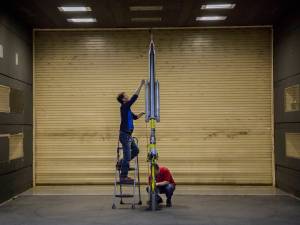AETC sets the strategic direction for NASA’s versatile and comprehensive portfolio of ground test aeronautics research capabilities. It continues to make targeted investments in its capabilities so that the nation’s aeronautics community has the tools to deliver the technology innovations and breakthroughs necessary to address the increasingly complex research and development challenges associated with safe and effective real-world flight.
Among these assets are subsonic, transonic, supersonic, and hypersonic wind tunnels and propulsion test facilities at Ames Research Center, Glenn Research Center, and Langley Research Center.
AETC’s integrated approach to asset planning, use, and management will consider the complementary high-end computing capabilities necessary for advanced analyses in conjunction with the ground experimentation capabilities. The project includes the NASA expertise that helps ensure safe and successful use of the assets and high quality of the research outcomes.
AETC also contains icing simulation (experimental and computational) and sensing development. These icing elements will enable next generation aircraft described above to safely operate in both airframe and engine icing weather conditions.
A National Partnership
AETC actively participates in the National Partnership for Aeronautical Testing (NPAT), a council co-chaired by NASA and the Department of Defense. The council’s charter is to develop an integrated strategy for the management of national aeronautics test capabilities and to enable national cooperation and coordination.
The NPAT initiative has led to an agreement on the guiding principles for facility pricing and access, the inventory and technical assessments of U.S. wind tunnels, the improved understanding and collaboration between operators and users from government and industry, and the establishment of a national force measurement technology capability.
Ground Facilities
Credits: James Bell, Kimberly Scarberry, Jon Levy, Joshua Sams
































